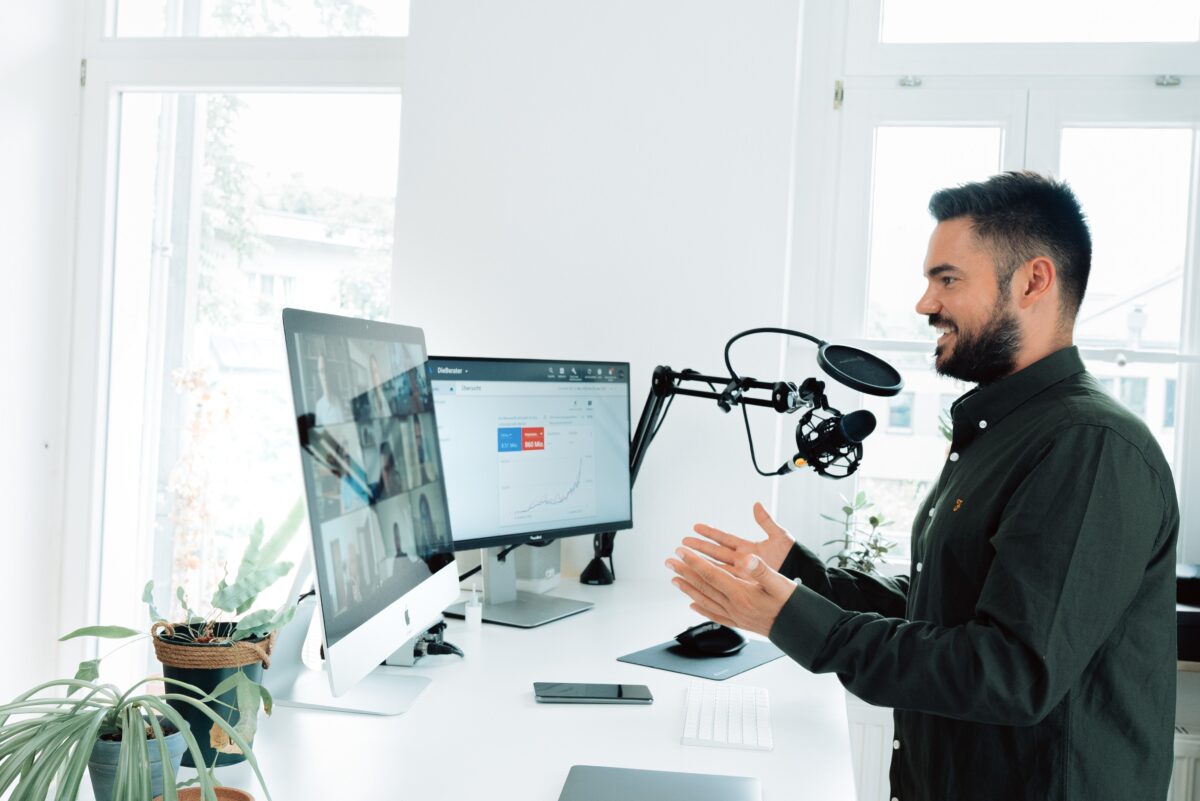Including webinars into your digital marketing strategy opens up what’s possible when connecting individuals anywhere in the world.
Many companies lean toward webinars because they can be more productive and offer a greater reach than in-person seminars.
A webinar is essentially an online presentation given by one or more experts, where the audience can be limited or open. Of course, the purpose is to generate interactions with those attending and, of course, answer any questions they have about the topic.
Check out our 12 expert tips for hosting your first webinar.
In a recent survey, about 95 percent of marketers said webinars play a key part in their marketing efforts, while 38 percent consider webinars critical to their digital communications.
Whether your company already uses webinars or not, keep in mind that there are two types:
- Live
- Pre-recorded
There are some pros and cons to both types. We’ll break down the differences and help you decide which type is best.
Live webinars
It might be obvious, but a live webinar is just that. Live.
Your audience watches you and your presentation in real-time. The host starts the online session, manages everything happening during the webinar and ends the session.
Pros
- Better connection with the audience. Live webinars offer the ability to interact with your audience, which generates better engagement and connection that a YouTube video, for example. Real-time watching alone holds the attention of your audience better and longer.
- Opportunity to do a live Q&A. Speaking of engagement, a live Q&A is a popular feature of live webinars. This means that you can better serve the needs of your audience by answering their questions directly.
- Quicker preparation with a bigger sense of urgency. A live webinar definitely needs preparation time in advance, but when compared to a pre-recorded piece of content that can require editing and more, your time is more efficiently spent on a live webinar. In addition, because it’s live, it has that sense of urgency on top of the real authenticity that’s built into live webinars.
Cons
- Technical issues. Any lags in your internet, software bugs or anything else can derail your live webinar very easily.
- Unexpected interruptions. Whether it’s someone being unmuted and undesirable noises happen as a result or it’s random happenings around your home or office (even something as simple as your phone ringing), expect the unexpected during your live webinar.
- Difficulty in scheduling the best time for the most participants. It’s simply a fact that you’ll never be able to choose a time for your webinar that will work for everyone. Ultimately, you have to go with the time that works for most, even if it doesn’t work for all.
Pre-recorded webinars
Pre-recorded webinars are recorded in advance, which means that you can edit as needed and then share it once you are totally happy with it.
Pros
- Mistakes can be edited. Because you can edit out any mistakes, you have the ability to make your webinar look more professional. You also can add additional elements, such as music, transitions, special effects and more.
- The option to re-record. If you’re not satisfied with your pre-recorded content, you always have the choice to record it over until it’s something you can work with.
- Prevent the jitters. It’s easy to get nervous about hosting a live webinar. With the pre-recorded format, the nervousness should be mimimized.
Cons
- Lack of audience engagement. You do lose out on real-time feedback from your viewers with a pre-recorded webinar. Feedback can help you know when to pivot to best suit the needs of your audience. Pre-recorded webinars can still have some audience interaction, but you would need to embed a video-streaming app into your website.
- Less connection from your audience. Because it’s not live, it’s more difficult for your audience to commit and feel engaged with your video no matter how professional it is.
Which type of webinar is better?
Technically, the best approach to webinars is to leverage both types when appropriate. The best type simply depends on your goals. And of course, you always have the option to record the live ones for access later.
Just make sure you think through the purpose of your upcoming webinar, the interaction you would like to have with your audience (or not) and then match the format to your needs.
While you’re planning a successful webinar, consider leveling up your digital marketing process. DailyStory features automation, dynamic audience segmentation and more. Schedule your free demo with us today.

